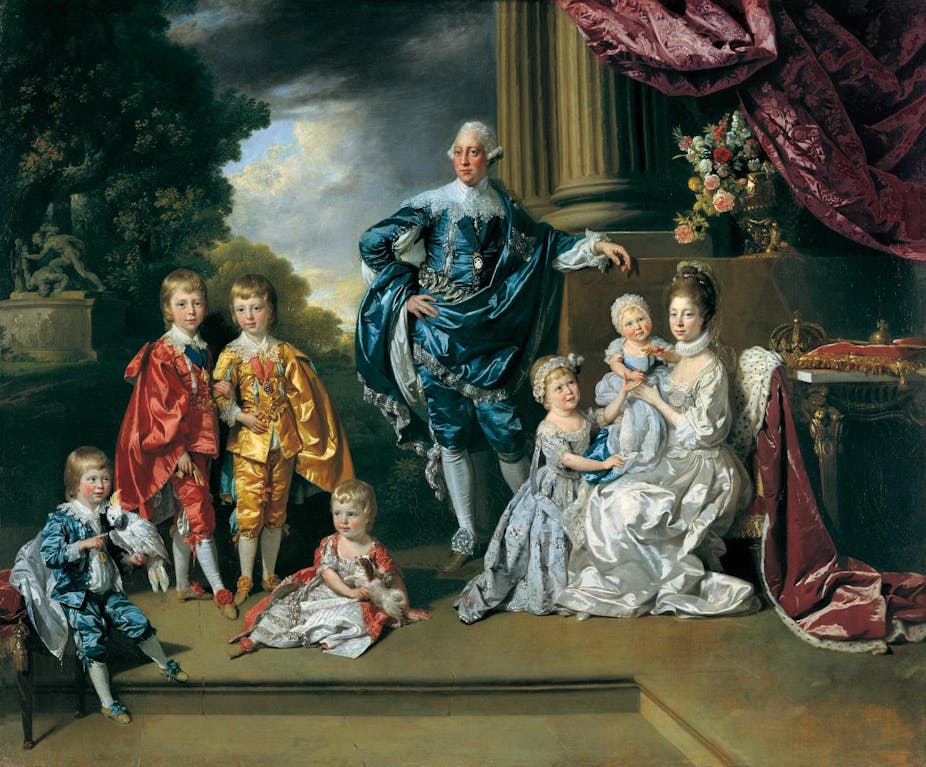
George III, Queen Charlotte and their Six Eldest Children by Johan Zoffany (1770). Wikimedia
During the Georgian period, the British royal family had a strange habit of concealing illness, even from themselves.
George III’s grandmother, Queen Caroline, suffered from a painful hernia for 13 years before it ruptured. No one other than Caroline’s husband, George II, had been aware of her condition, as she had refused to discuss it with a doctor. Only when the hernia ruptured in November 1737 did Caroline finally agree to consult a physician. It was too late, though. The queen died weeks later.
When George III himself fell ill, in October 1788, his condition was no less mysterious. The “royal malady” did however become the subject of fevered political and public debate because it rendered him unable to do his job. This led to a regency crisis and a media storm, wherein conspiracy theories abounded.
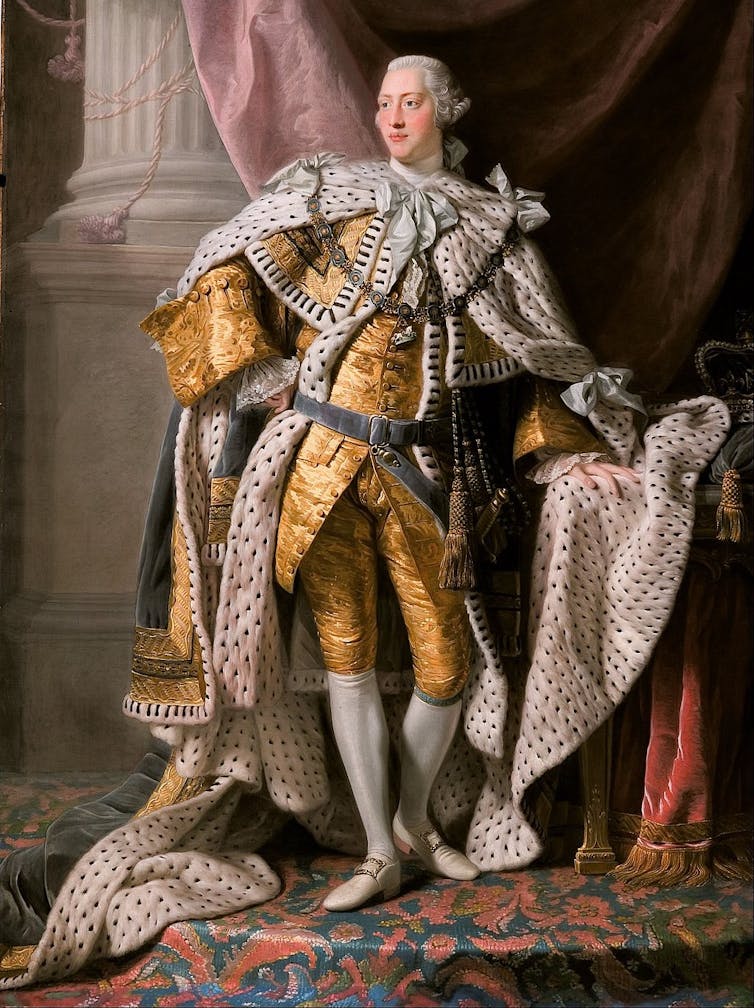
King George III in Coronation Robes by Allan Ramsay (1765). Wikimedia
In October 1788, after nearly 28 years on the throne, George III began exhibiting strange symptoms. These included frantic speech and erratic behaviour. After the king’s usual doctors were unable to make headway in his treatment, Dr Francis Willis, a so-called “mad doctor”, was called in to assist.
Even today, historians don’t agree on what George III’s “malady” really was. Claims that it was the result of the liver disorder porphyria, have been challenged by several scholars in recent years.
years.
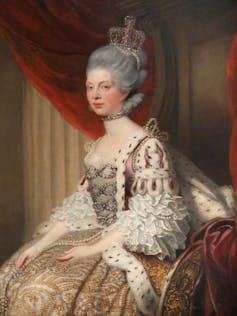
Queen Charlotte by Joshua Reynolds (1779). Wikimedia
Research now suggests that he, in fact, suffered from bipolar disorder. But it is difficult to diagnose a patient almost 250 years after the fact, especially as mental health was understood very differently in the 18th century.
Whatever the king’s condition, it rendered him unable to do his job. The government’s response was to discuss a potential regency.
The king’s eldest son, George, the Prince of Wales, was, at 26 years old, of age to act as regent. He was also, however, friendly with the government’s opposition. Prime Minister William Pitt duly worried that he and his government would be dismissed the moment the prince became regent.
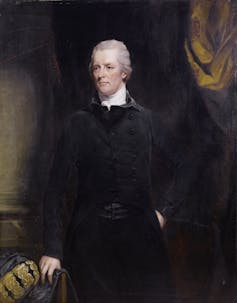
William Pitt by John Hoppner (1806). Wikimedia
Pitt therefore opted to delay formalising regency legislation, arguing that the king’s illness was temporary. The discussions dragged on into November, then December. Pressure on Pitt’s government grew.
Supporters of the Prince of Wales, including George III’s own brother William, Duke of Cumberland, insisted that the king would not recover and called for the prince to be given full powers as regent. Pitt and his party countered by suggesting that the Prince of Wales should have a restricted regency. They wanted the prince’s mother, Queen Charlotte, to take responsibility for care of the king.
Passionate parliamentary debates about the rights of the Prince of Wales ensued. The British press kept up a dedicated reportage on the king’s condition. Such was the public clamour for information that the royal doctors agreed to issue daily public bulletins providing updates.
These updates were printed in newspapers. This ensured that Britons across the country could keep informed of the king’s health.
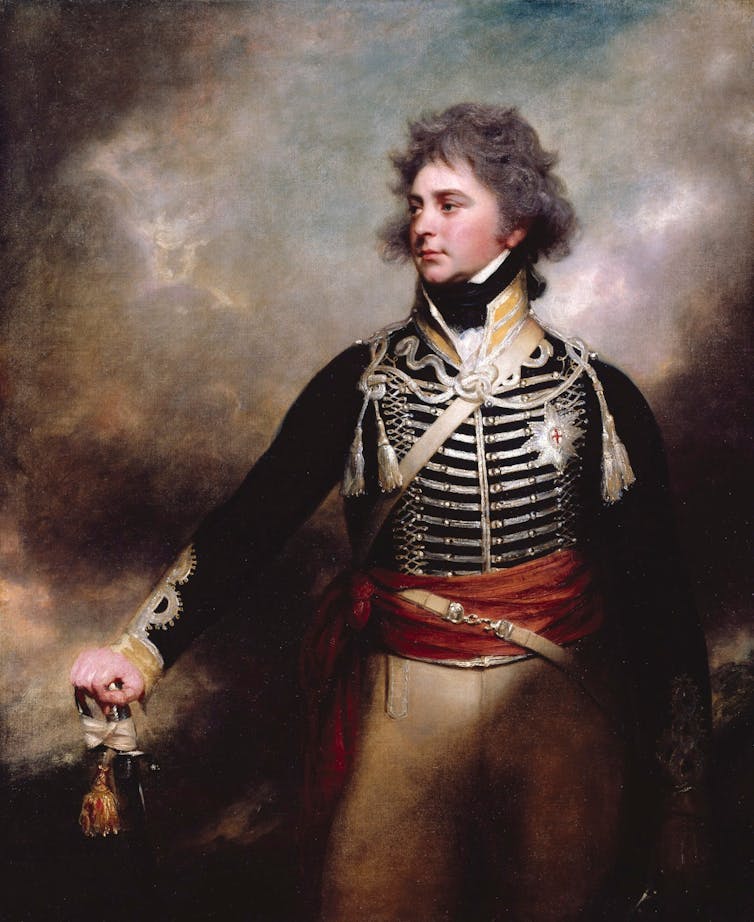
The Prince of Wales by Sir William Beechey (circa 1798) Wikimedia
When the bulletins were seen to be too vague or repetitive, journalists complained that the doctors were trying to hide the king’s condition from the British public. The press deemed such secrecy unacceptable. Even when suffering from a major illness, the king remained a public individual for whom privacy could never be expected.
Conspiratorial thinking
Amid the political and media storms a dramatic conspiracy theory emerged. This held that Prime Minister Pitt and Queen Charlotte were colluding to seize power from the Prince of Wales so that they could rule in the king’s stead.
Though these reports were circulated (and probably paid for) by the government’s opponents, they were reported and reprinted in numerous newspapers. Such was the clamour against the queen and the prime minister that the Times newspaper bluntly accused the opposition party of slandering them both, in an attempt to force through a regency bill which favoured their supporter, the Prince of Wales.
On January 15, the Times stated that the opposition had “began a most scurrilous attack on the Queen, not only by private conversation, but through the medium of the prints in their interest”.
Queen Charlotte had enjoyed a largely popular public image until this incident. Following it, she was portrayed in satirical images as a scheming mother and wife willing to betray her own son in a bid for power. One notable example by Thomas Rowlandson, published on December 20 1788, depicts the queen and Pitt together with split crowns over their heads, Charlotte stepping on the Prince of Wales’s emblem of white feathers.
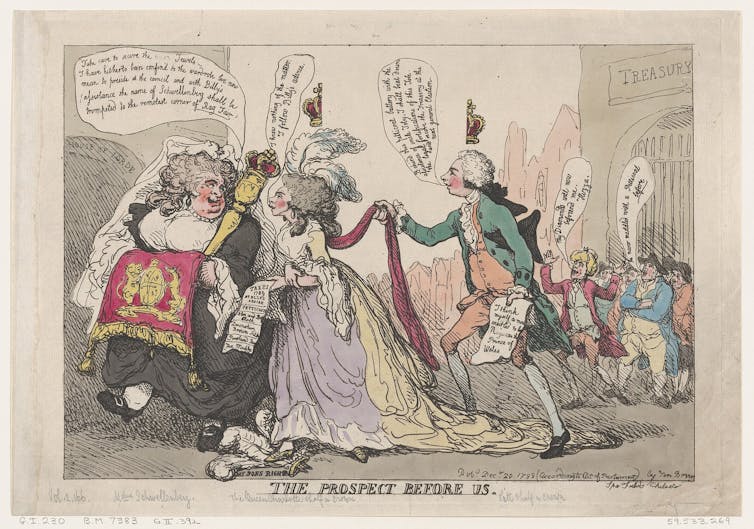
The Prospect Before Us by Thomas Rowlandson. Elisha Whittelsey Collection|Wikimedia
In fact, the queen was deeply reluctant to get involved in the political aspects of what became known as the “regency crisis”. She was, however, alarmed to see her eldest son immediately assuming control over the royal household. Though he was heir to the throne, the Prince of Wales’s enormous debts and his love of frivolity did not point towards a mature and sensible ruler.
Most of all, Charlotte was deeply concerned about the king’s care and recovery. Her stress and anxiety took a toll on her physical health. She lost an alarming amount of weight and her brown hair turned white almost overnight. Charlotte’s devotion to her husband led her to formally agree to Pitt’s suggestion that she be responsible for the king’s person and his household in February 1789.
Fortunately for Queen Charlotte, her husband recovered just as the Regency Bill was about to be passed. Even then, the opposition continued to slander the queen and the prime minister, claiming that they had tried to conceal the king’s recovery in order to complete their alleged power-grab.
Only when George III attended parliament in person on March 10 1789 to formally announce his recovery did the conspiracy theories stop. The episode highlights the growth of the press and its role in shaping the British public’s perception of the royal family’s behaviour – fictional or otherwise.





